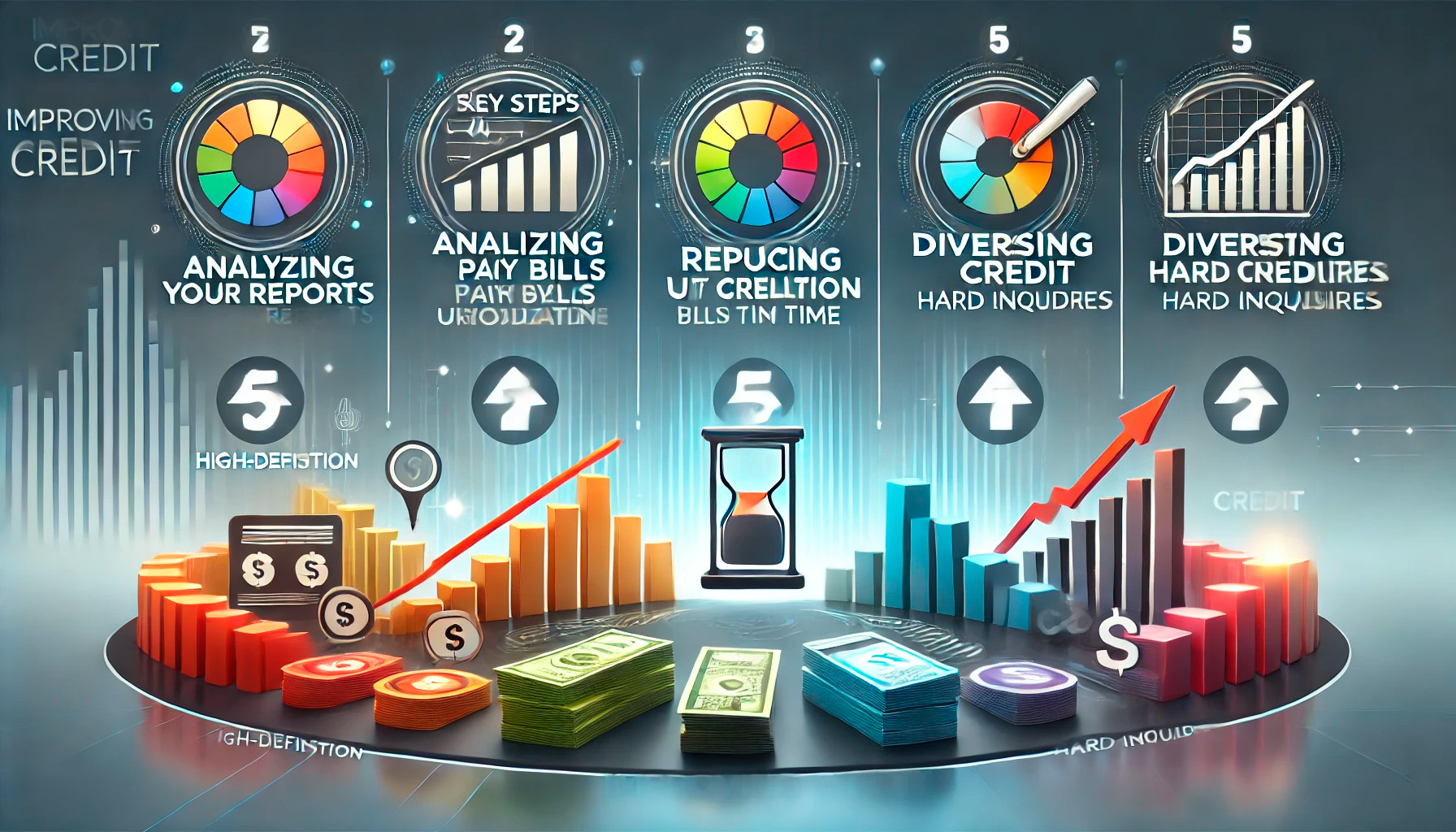Your credit score is one of the most powerful tools in your financial arsenal. Whether you’re applying for a mortgage, a car loan, or business financing, your credit profile determines not only your eligibility but also the terms of your borrowing. A higher credit score means access to lower interest rates, higher credit limits, and better overall loan conditions. If you’re looking to enhance your financial opportunities, improving your credit is the first step. Here’s a detailed guide on the essential steps to take for better financing options.
Step 1: Review and Understand Your Credit Reports
The foundation of credit improvement starts with understanding your current situation. Obtain your credit reports from the three major credit bureaus—Experian, Equifax, and TransUnion. These reports provide a comprehensive overview of your credit history, including account statuses, balances, and payment histories.
Carefully examine your reports for inaccuracies such as incorrect balances, late payments that were made on time, or accounts that don’t belong to you. If you find errors, dispute them with the credit bureau by providing supporting documentation. Correcting inaccuracies can result in immediate improvements to your credit score, giving you a better starting point for further enhancement.
Beyond identifying errors, analyzing your credit report helps you understand patterns in your financial behavior. Are late payments a frequent issue? Do you carry high balances relative to your credit limits? Recognizing these trends allows you to focus your efforts on the areas that will have the greatest impact on your credit score.

Step 2: Pay Bills on Time Consistently
Payment history is the most influential factor in your credit score, accounting for 35% of the total calculation. Consistently paying bills on time is one of the most effective ways to improve your credit. Each on-time payment adds positive data to your credit report, demonstrating reliability and financial discipline.
If you’ve struggled with late payments in the past, focus on bringing all accounts current. Contact creditors to arrange payment plans or negotiate settlements for overdue accounts. Setting up automatic payments or reminders can help you stay on track and avoid missed deadlines moving forward.
Additionally, prioritize payments on accounts that report to credit bureaus. While paying all bills on time is important, focusing on credit cards, loans, and other accounts that directly affect your credit score will yield the most significant improvements.
Step 3: Reduce Your Credit Utilization Ratio
Your credit utilization ratio, the percentage of your available credit that you’re using, significantly impacts your score. A high utilization rate suggests financial strain, which can lower your score. Aim to keep your utilization below 30%, and ideally under 10%, for the best results.
Start by paying down high-interest credit card balances to free up available credit. If possible, request a credit limit increase from your card issuer to reduce your utilization ratio. However, avoid adding new charges to your account, as this can counteract the benefits of a higher limit. Consistently managing your utilization demonstrates responsible credit behavior to lenders.
Another strategy is to distribute balances across multiple cards. If one card is nearing its limit while others have available credit, transferring a portion of the balance can improve your overall utilization ratio. Be cautious of balance transfer fees, and ensure that this strategy aligns with your financial plan.
Step 4: Diversify Your Credit Mix
Having a variety of credit types, such as credit cards, personal loans, and mortgages, contributes to a stronger credit profile. A diverse credit mix shows lenders that you can responsibly manage different forms of debt, which is particularly important for building or improving your credit score.
If your credit history lacks diversity, consider adding a new type of credit strategically. For example, a secured credit card or credit-builder loan can help establish a positive payment history while adding variety to your credit mix. Be cautious, however, not to open too many accounts at once, as this can lead to hard inquiries that temporarily lower your score.
Diversification doesn’t mean taking on unnecessary debt. Instead, focus on gradually building a well-rounded credit profile that reflects your ability to handle various financial obligations. For instance, if you currently only have credit card accounts, a small installment loan can enhance your credit mix without significantly increasing your financial burden.

Step 5: Limit Hard Inquiries and Avoid New Debt
Each time you apply for new credit, a hard inquiry is added to your credit report. While a single inquiry has a minimal impact, multiple inquiries within a short period can lower your score and signal to lenders that you may be overextending yourself. To protect your credit, limit applications for new credit and only apply when necessary.
If you’re shopping for a mortgage or auto loan, aim to complete applications within a two-week window. Credit scoring models typically treat multiple inquiries for the same type of loan as a single inquiry during this period, minimizing their impact. Additionally, focus on paying down existing debt rather than taking on new obligations, as a lower debt-to-income ratio improves your creditworthiness.
When considering new credit, think strategically about its long-term impact. For example, opening a new credit card to take advantage of a promotional offer might temporarily lower your score, but responsibly managing the account can lead to future improvements.
The Long-Term Benefits of Improved Credit
Improving your credit isn’t just about better loan terms—it’s about creating financial freedom and stability. A strong credit profile reduces borrowing costs, freeing up funds for savings, investments, or other goals. It also enhances your ability to secure housing, negotiate insurance premiums, and even pursue career opportunities in industries where credit checks are common.
Over time, the habits you develop while improving your credit—such as budgeting, timely payments, and responsible borrowing—become the foundation of long-term financial success. By taking control of your credit today, you position yourself for greater opportunities and peace of mind in the future.
Additionally, improved credit creates a safety net for emergencies. When unexpected expenses arise, such as medical bills or home repairs, a strong credit profile ensures that you can access affordable financing without resorting to high-interest alternatives.
Conclusion: Take Action for Better Financing Options
Improving your credit requires patience, discipline, and a clear strategy, but the rewards are worth the effort. By reviewing your credit reports, paying bills on time, reducing credit utilization, diversifying your credit mix, and limiting new debt, you can achieve a stronger credit profile and access better financing options.
Remember, credit improvement is a journey, not a destination. Each positive step you take brings you closer to financial stability and opens the door to more opportunities. Start your journey today and take control of your financial future with a credit score that works for you, not against you.

